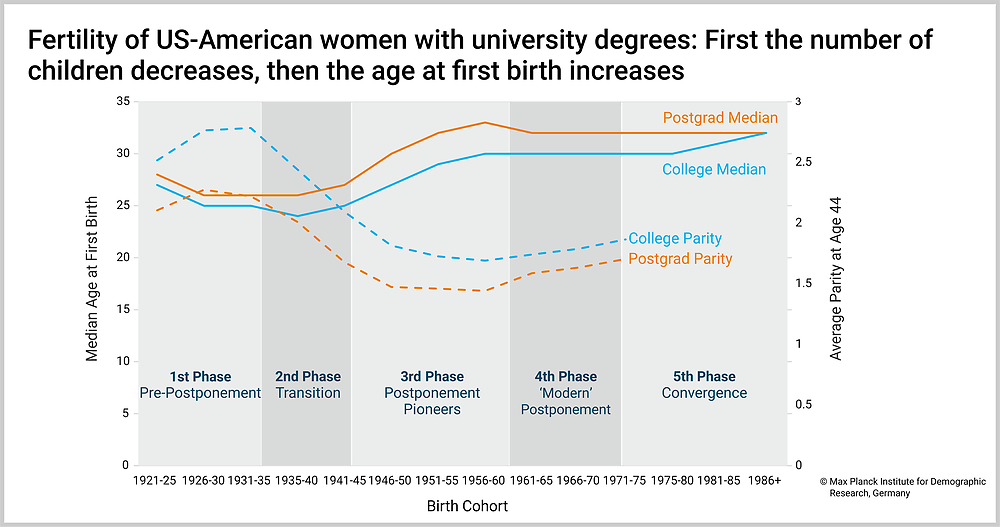November 25, 2020 | Press Release
No Does Not Mean Never: Older Does Not Necessarily Equate to Fewer Children

On average, women with at least a Master´s degree have their first child later in life than women with a Bachelor´s degree. © iStockphoto.com/svetikd
In her latest study, researcher Natalie Nitsche analyzed the fertility behavior of women with university degrees from the U.S. She compared two groups of highly educated women over the past 80 years and described five different phases of birth behaviors.
How do the timing and number of children of women with a bachelor's degree differ from the birth behavior of women with at least a master's degree? Natalie Nitsche, a researcher at the Max Planck Institute for Demographic Research (MPIDR) in Rostock, Germany, and a colleague of hers investigated this question amongst U.S.-American women born between 1920 and 1986.
Within the study, they described five different phases of birth behavior. In each of the five phases, women with at least a master’s degree had their first child later in life compared to women with bachelor's degrees. On average, women with at least a master’s degree also had fewer children and more of them remained childless. The two researchers published their study in the European Journal of Population.

For women of both educational levels, Natalie Nitsche and her colleague describe five phases with different birth behavior. For the entire period, it is shown that women with a bachelor´s degree as well as women with at least a master´s degree first had fewer children on average, and only then the average age at the time of the first birth increased. © MPIDR
Download figure (PNG File, 524 kB)
To carry out the analyses, the researchers used data from the long-term U.S. Current Population Survey (CPS). This survey primarily examines the labor market situation and also publishes data on birth behavior every two years.
Fertility amongst women with university degrees changed during the 20th century
A comparison of women with the same level of education from different age groups also reveals differences. A quarter of the women with at least a master's degree who were born between 1965 and 1975 did not become mothers until the average age of 34. By contrast, women with the same level of education who were born earlier - between 1951 and 1955 - were “only” 32 years old when their first child was born. Nevertheless, the proportion of childless women was significantly higher amongst the older generation. Looking at this category of women, around 33 percent had no children; in the group of women born between 1965 and 1975, the proportion was only 24 percent.
“If many women in a cohort have their first child later in life, it does not automatically mean that fewer children per woman will be born in this cohort. In like manner, it does not mean that the proportion of women who do not have children at all will necessarily increase,” says Natalie Nitsche.
Original publication
Nitsche, N., Brückner, H.: Late, but not too Late? Postponement of First Birth among Highly Educated U.S. Women. European Journal of Population (2020) DOI: 10.1007/s10680-020-09571-z
Authors and Affiliations
Natalie Nitsche, Max-Planck-Institut für demografische Forschung in Rostock
Hannah Brückner, NYU Abu Dhabi, Abu Dhabi